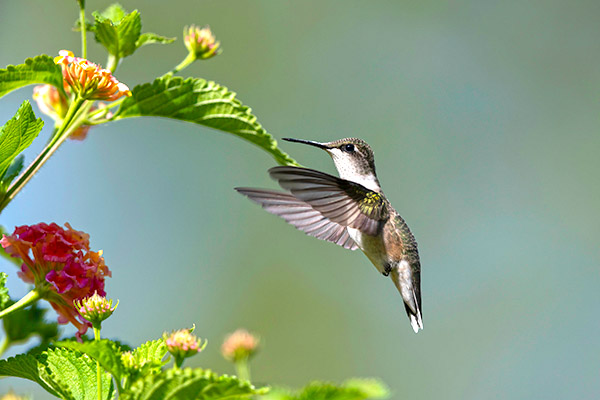
Western Rufous Hummingbirds embark on an awe-inspiring migratory journey through the Rocky Mountains and adjacent lowlands from May to August, drawn by the flourishing wildflower season. They establish nests in our local region, exhibiting a fierce territoriality as they claim and defend their feeding territories. During winter, these remarkable birds seek refuge in wooded areas within the Mexican state of Guerrero, covering a staggering distance of over 2,000 mi (3,200 km) during their overland migration—a remarkable feat considering their diminutive size, weighing merely 3 to 4 grams (0.11 to 0.14 oz).
Distinguished by their vibrant orange and green-and-orange plumage, adult male rufous hummingbirds tend to commence their migration slightly earlier than females and young birds, typically departing by early August. However, by mid-August, the entire population has migrated, leaving behind a captivating spectacle.
These tiny aviators primarily sustain themselves by extracting nectar from flowers with their extendable tongues or catching insects mid-flight. To allure and accommodate these aerial wonders, we hang specialized feeders filled with a simple sugar syrup. The upkeep demands diligence, as these hummingbirds, buzzing with activity throughout the day, necessitate frequent refilling. In the summer of 2023, our record-breaking year, we welcomed an impressive daily visitation of 60-70 birds to our five large feeders, creating a vibrant display of natural splendor.
Renowned for their feisty nature, Western Rufous Hummingbirds captivate observers with their relentless interactions at flowers and feeders, providing endless amusement through their captivating antics.

Additional insights about Western Rufous Hummingbirds:
- The Rufous Hummingbird, a frequent visitor to hummingbird feeders, displays remarkable territorial behavior year-round, even challenging larger hummingbird species and often chase away chipmunks from their nesting sites.
- Boasting one of the longest migratory journeys relative to body size, the Rufous Hummingbird’s roughly 3,900-mile migration from Alaska to Mexico equals an astounding 78,470,000 body lengths. This journey surpasses the longer-distance flight of the larger Arctic Tern.
- The Rufous Hummingbird’s migration follows a clockwise circuit of western North America, from the Pacific Coast to the Rocky Mountains, demonstrating an impressive memory for locations and patterns.
- With breeding territories extending as far north as southeastern Alaska, the Rufous Hummingbird claims the northernmost breeding range of any hummingbird globally.
- Clocking an astonishing wingbeat frequency of 52–62 beats per second, Rufous Hummingbirds showcase remarkable agility, enabling them to hover in place with exceptional precision.
- Although not typically colonial nesters, there have been reports of clusters of Rufous Hummingbird nests in close proximity, such as in Washington state.
- Despite their elusive nature, records exist of Rufous Hummingbirds being captured by a Brown-crested Flycatcher and even a frog.
- Notably, the oldest recorded Rufous Hummingbird, a female, was at least 8 years and 11 months old when recaptured during banding operations in British Columbia in 2004.
Visit Mt Robson’s Mountain River Lodge and witness the mesmerizing spectacle of migrating Western Rufous Hummingbirds. Explore our lodging options and plan your vacation to experience the beauty of our region.
